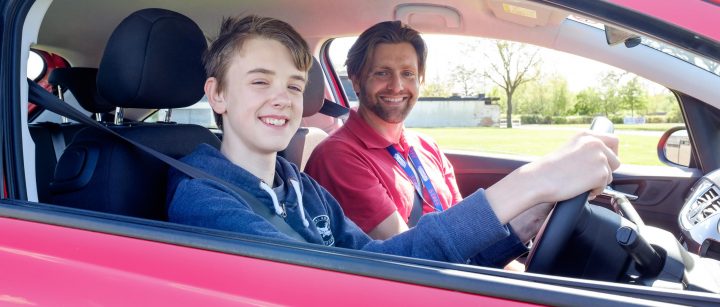With fortunate students about to embark on their university courses, some will be facing their first autumn and winter behind the wheel and it’s worth repeating some good advice from Richard Gladman, IAM RoadSmart’s Head of Driving and Riding Standards.
“Our driving habits start being set from the moment we venture out alone after passing our driving test, try to retain the good ones that your instructor instilled. It’s said it takes 17 repetitions of something to make it a habit, so whether you’ve just passed your test or know someone who has, here are some tips,” said Richard.
These tips could also help save you some money on things such as insurance, wear and tear of the car and building your No Claims discount.
1.Safe speed
One of the best pieces of advice I was ever given about driving was ‘have the confidence to drive slowly’. It’s easy to get carried away speeding or feeling like you need to speed, especially if you are in rush, but the last thing you want is to be involved in collisions or accumulating unnecessary points on your licence. It’s important to keep an eye on your speedometer and always look out for speed limit signs, as they can change based on your surroundings. Staying at a slow, steady speed when driving around built up areas, where there are pedestrians around is important, this aids in anticipation and helps you react to situations better.
2.Smooth Acceleration
Different cars have different temperaments when it comes to accelerating, but generally being easy on the right foot does the trick, business-like when required but always smooth This tip is beneficial as it will ease pressure on your speed when approaching pedestrian crossings, traffic build-up and traffic lights. And as a bonus, you will save on fuel.
3.Gentle braking
It’s always good to rein in bad braking habits from the start, you don’t want to be giving yourself or your passengers a scare by braking suddenly and harshly. Instead, try to plan and give yourself time to change your speed. If you know you are approaching your destination, built up areas, crossings etc., lower your speed and gently cover your brake pedal with your foot until you need to stop.
4.Keep your distance
Were you ever told by your instructor to always keep your distance? This was to ensure you have some space to react to what the car in front of you is doing, in case they decide to emergency or harshly brake. Remember only a fool breaks the two second rule, and this is an absolute minimum.
5.Comfortable cornering
It can be tough mastering corners and the last thing you want is to get into collision with another car when turning or going around a corner, especially if it has a blind spot – quite common on country lanes. Slowing down before approaching a corner helps you avoid unwanted situations and hazards and can also enable you to take the corner accurately without panicking or emergency braking.
6.Phone Distraction
Our phones are used for everything these days and many find it hard to navigate without them, but they are such a big distraction when driving. Ideally your phone should be put away out of sight and on silent make the glovebox your phone box when you drive. If calls need to be made, you should park up and switch the engine off before doing so.
7.Stay focused
Often, we can encounter road works, collisions and other obstacles along our journey and on routes we know well. So, it’s important to stay alert and level-headed when these situations occur. Often, we also travel with passengers, where we can easily be distracted. When in these situations, it is very important to let your passengers know politely that they will have to keep the noise down or behave appropriately for you to keep your focus throughout the journey.
8.Review your journey
Once you have completed your journey, it can be good to review and reflect. Like you would have done with your instructor.
Richard added, “Even now – a good few years into a driving career – I still hear the voice of various instructors and mentors offering advice.
“When I hear that voice in my head, I know to press the reset button and revert to what I was taught. This can help you anticipate situations and analyse your driving, pushing you to investigate improving the way you use the road and give you the added patience.”


